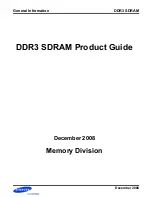Execution Units
MSC8144E Reference Manual, Rev. 3
Freescale Semiconductor
26-65
the RNG Interrupt Mask Register is zero (see Section 26.5.12.5, RNG Interrupt Status Register
(RNGISR), on page 26-183).
If the RNG Interrupt Status Register is non-zero, the RNG halts and the RNG error interrupt
signal is asserted to the controller (see Section 26.5.4.6, Controller Interrupt Status Register
(CISR), on page 26-84). In addition, if the RNG is being operated through channel-controlled
access, then an interrupt signal is generated to the channel to which this EU is assigned. The EU
error bit is set in the channel pointer Status Register (see Section 26.5.5.2, Channel Pointer
Status Registers (CPSR[1–4]), on page 26-92) and generates a channel error interrupt to the
controller.
If the Interrupt Status Register is written from the core processor, 1s in the value written are
recorded in the Interrupt Status Register if the corresponding bit is unmasked in the Interrupt
Mask Register. All other bits are cleared. This register can also be cleared by setting the RI bit of
the RNG Reset Control Register.
26.4.7.6 RNG Interrupt Mask Register
The RNG Interrupt Mask Register controls the result of detected errors. For a given error (as
defined in Section 26.5.12.5, RNG Interrupt Status Register (RNGISR), on page 26-183), if the
corresponding bit in this register is set, then the error is disabled; no error interrupt occurs and the
Interrupt Status Register is not updated to reflect the error. If the corresponding bit is not set, then
upon detection of an error, the Interrupt Status Register is updated to reflect the error, causing
assertion of the error interrupt signal, and causing the module to halt processing.
26.4.7.7 RNG End_of_Message Register
The RNG End_of_Message Register is a writable location but serves no function in the RNG. It
is documented for the sake of consistency with the other EUs.
26.4.7.8 RNG FIFO
The RNG uses an output FIFO to collect periodically sampled random 64-bit numbers, with the
intent that random data is always available for reading. Normally, the channels control all access
to this FIFO. For core processor-controlled operation, a read from anywhere in the RNG FIFO
address space dequeues data from the RNG output FIFO.
The output FIFO is readable using byte, 4-byte, or 8-byte accesses. When all 8 bytes of the
header are read, those 8 bytes are automatically dequeued from the FIFO so that the next 8 bytes
(if any) becomes available for reading. If any byte is read twice between dequeues, it causes an
error interrupt of type AE from the EU.
Underflows caused by reading or writing the RNG output FIFO are reflected in the RNG
Interrupt Status Register. Also, a write to the RNG output FIFO space is reflected as an
addressing error in the RNG Interrupt Status Register.
Summary of Contents for MSC8144E
Page 1: ...MSC8144E Reference Manual Quad Core Media Signal Processor MSC8144ERM Rev 3 July 2009 ...
Page 48: ...MSC8144E Reference Manual Rev 3 xlviii Freescale Semiconductor ...
Page 86: ...MSC8144E Reference Manual Rev 3 1 38 Freescale Semiconductor Overview ...
Page 168: ...MSC8144E Reference Manual Rev 3 3 60 Freescale Semiconductor External Signals ...
Page 242: ...MSC8144E Reference Manual Rev 3 5 26 Freescale Semiconductor Reset ...
Page 314: ...MSC8144E Reference Manual Rev 3 8 24 Freescale Semiconductor General Configuration Registers ...
Page 414: ...MSC8144E Reference Manual Rev 3 10 14 Freescale Semiconductor MSC8144E SC3400 DSP Subsystem ...
Page 452: ...MSC8144E Reference Manual Rev 3 11 38 Freescale Semiconductor Internal Memory Subsystem ...
Page 520: ...MSC8144E Reference Manual Rev 3 12 68 Freescale Semiconductor DDR SDRAM Memory Controller ...
Page 1070: ...MSC8144E Reference Manual Rev 3 21 28 Freescale Semiconductor Timers ...


















